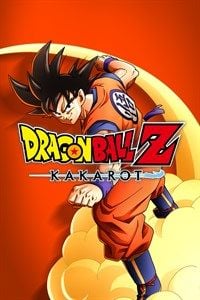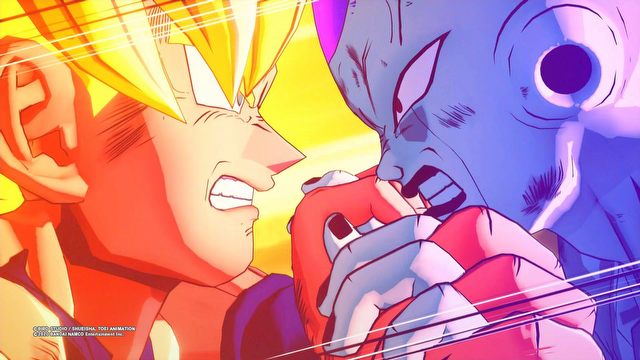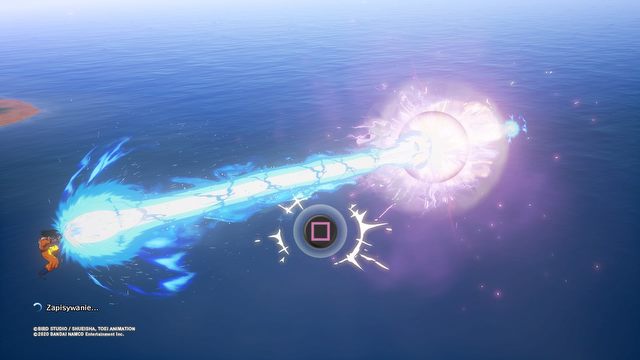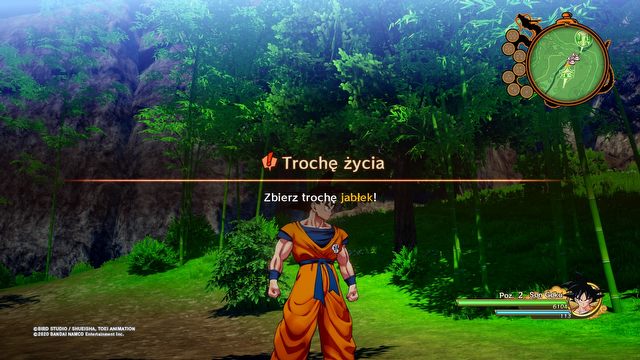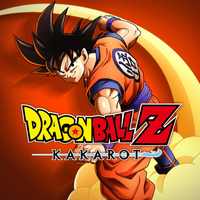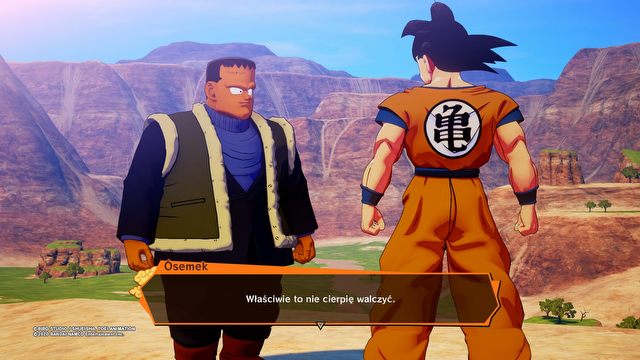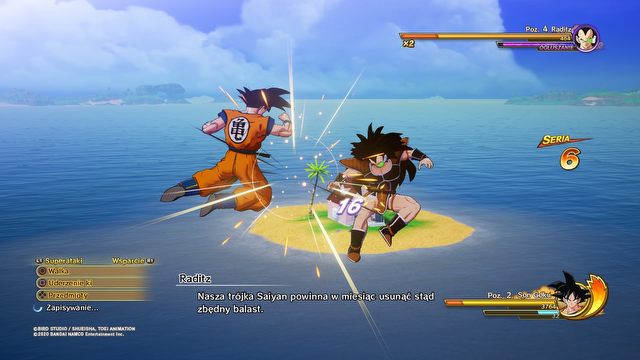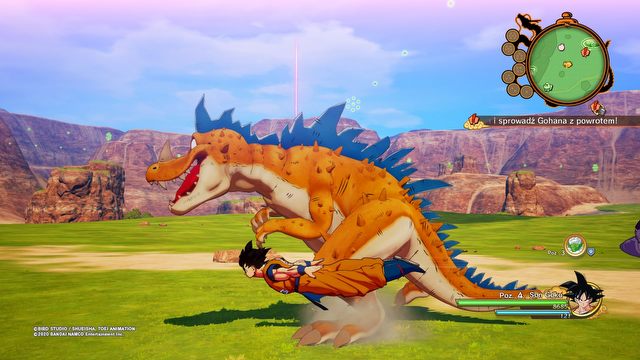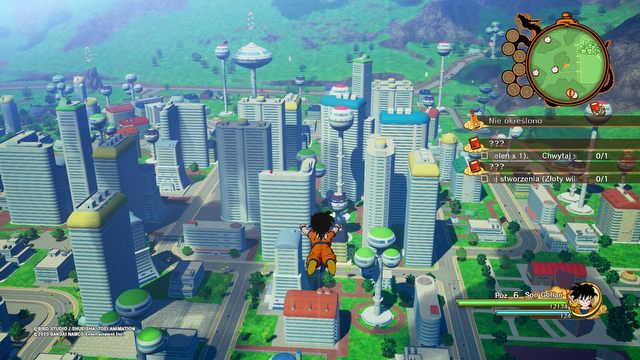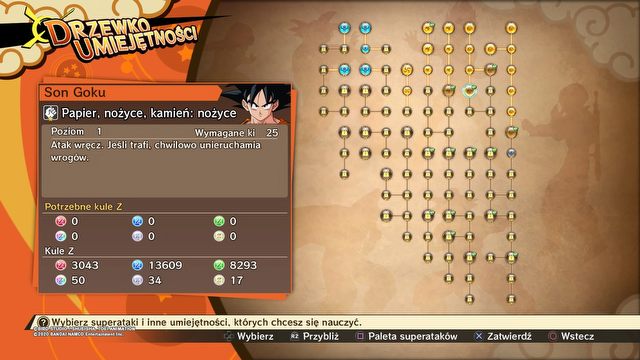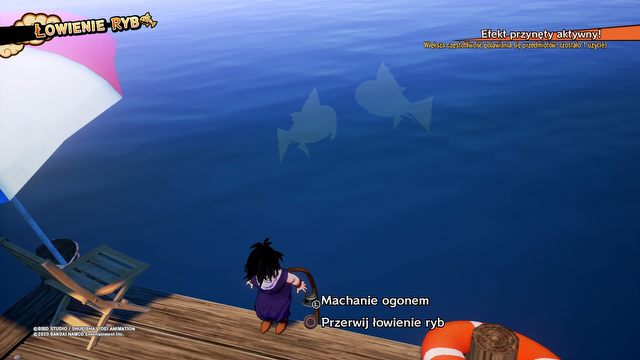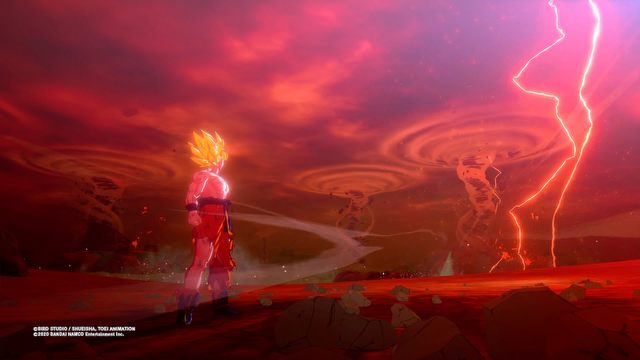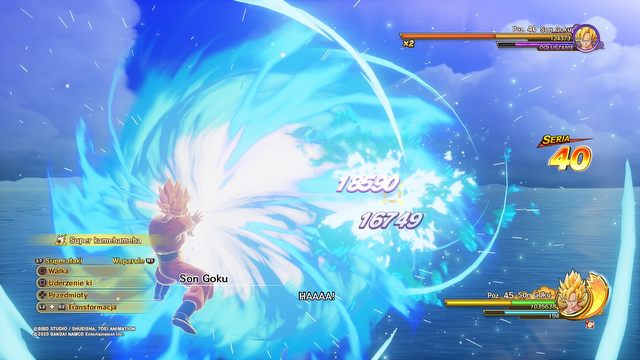Dragon Ball Z: Kakarot Review – Five Days of Fun with Average Game
Dragon Ball Z: Kakarot is a game for fans still overflowing with sentiment to Son Goku. And only for them. Everyone else should keep on looking.
The review is based on the PS4 version. It's also relevant to XONE version(s).

Kakarot is:
- a rundown Dragon Ball Z's entire story – from Raditz's arrival on Earth to the end of the Buu saga;
- the ability to play as Son Goku, Son Gohan, Piccolo and several other iconic characters and explore a world taken directly from the cult anime;
- more action than RPG;
- combat system is quite similar to that of the Naruto: Ultimate Ninja Storm series, although updated to the realities of Dragon Ball;
- the game was created out of love for the universe of Son Goku and company – the more you love Sayan's adventures, the easier it is to forgive his many mistakes, and have more fun.
- good combat system;
- perfectly used license – the game is saturated with the atmosphere of DB, offers tons of references and easter eggs, has original voice-over, and almost perfectly reproduces some scenes;
- flying can even be enjoyable, and the possibility of ramming enemies is genuinely satisfying;
- the plot really covers all the iconic events from around Dragon Ball Z;
- despite numerous bugs and problems, it feels quite nice.
- a hopeless beginning that can discourage you for good;
- outdated visuals, especially ugly in exploration mode;
- flat and generic side quests;
- open world is empty;
- many bugs and technical blemishes;
- ill-considered character development system;
I didn't believe it would work, and I had three reasons. Firstly, Dragon Ball Z is a weak foundation of a typical role-playing game. "Z" almost entirely boiled down to infinitely long battles, which isn't really enough to warrant a game based on exploration. The classic Dragon Ball would be a much better choice here. But the classic adventures of little Goku are not as popular as the stories of Z Warriors, so why would anyone want to start with them, even if it would mean a more succinct experience...
Secondly, if Kakarot really has to be an RPG based on DBZ, then – for the love of Beerus! – don't squeeze everything into a single game! I mean, it's nearly 300 episodes of animé! Pushing that into a 40-hour game complete with all mechanics etc, can have only one outcome: cutting and reducing the plot, so that the original story becomes a dull summary. And thirdly – after the absolute train wreck that last year's Jump Force proved to be, my credit of confidence for Namco Bandai's anime has sharply decreased.
Fortunately, I eventually found I was partially mistaken. Perhaps Dragon Ball Z: Kakarot isn't a perfect game, but it also isn't miserable, as I was afraid it would be. But, make no mistake, it's merely average; based on outdated ideas, in some instances obviously half-baked, it's a game you cannot play without occasional frowns. And if, by chance, you are fans of one of the most popular animé that raised an entire generation of players, you'll be able to have fun. But before that happens, you will face an absolute disaster.
Mr. Hitchcock! Where's the earthquake?
The beginning of the game is terrible. Seriously, I can't think of any other game that would offer equally disappointing opening. After launching Kakarot and completing a very short training battle with Piccolo (it's not that bad yet), we end up in a forest in the mountains, as Goku, where we spend time with several-years-old Gohan. And so, it begins. The environment is ugly. Invisible walls are everywhere. Gohan moans constantly, repeating the same sentences over and over again over the tears. That's not what fun looks like.
What about us? Our mission is exactly what you'd expect from a Dragon Ball Z. Collecting apples from trees. Escorting Gohan to the hunting ground – which isn't easy, since the kid is pretty timid, and if you leave him just a few feet behind, he starts crying. He also gets stuck pretty often, since the AI, primarily designed for flying, can't really handle walking. There also is fishing. And eventually – flying the Kinto cloud. But don't worry! In this case, there's also enough invisible walls to prevent any (oh, terror) exploration...
The first two hours of Kakarot are a nightmare reminiscent of the worst design decisions from a decade ago. Or even before – I feel devs knew to avoid solutions like these even in times of PlayStation 2. But it's worth to gnash your teeth for an hour or two, because as soon as we go through this chasing apples and babysitting Gohan nonsense, the game begins to open up its virtual world for us, moving on to events that are remembered from the anime. And then it becomes interesting.

SECOND OPINION
Dragon Ball is just part of my childhood – I adored the series as a kid. My love for it still burns, and I had high hopes for Dragon Ball Z: Kakarot. It was supposed be spectacular – depicting all events from DBZ, great combat, and lots of side activities. A genuine RPG with real depth – unfortunately, it's not so colorful, because the developers gave "only" a solid, but average game.
The events of the animé were recreated perfectly – that's a fact, and a field day for fans of the series. Unfortunately, gameplay becomes repetitive quite soon, and after the first few hours, fatigue and boredom may appear. Even though we control different heroes, we continue to make the same attacks and fight in the same way. The character development system is unsatisfactory and overtly complicated. All side activities are boring and smell archaic – the entire notion of a semi-open world seemed superfluous to me. Constant jumping between areas, loading screens, and several types of small enemies were all irksome.
Still, I had the motivation to keep playing and trudge through the subsequent sagas. It was great to hear the iconic soundtrack, watch the scenes take straight from the animé, and hear the original voices of the characters. The spirit of Dragon Ball is present in many moments, and the length of the game is quite impressive, at around 30 hours. It's very much an unabridged version of the story, and the devs actually went as far as tying some of the original's loose ends. Too bad they didn't have enough time to diversify the fun and design more interesting side quests. As a big fan of the series, I rate the game a 7 – judging by the popularity of the title, however, I suspect that we might get a sequel and DB: Super adaptation. Hopefully, we will get a more interesting and challenging title then!
Gregory "Alban3k" Misztal
I've traveled all over the world, from Satan City to Namek
Once it shows its true face, you realize Kakarot is based on three, closely related foundations – weak exploration, decent battles, and a nostalgic rehearsal of a well-known and beloved storyline. This former fails from the very beginning, when it's promptly revealed that it has no positive aspects. It gets a little better later on, but even then, it remains a chore throughout.
The game world is divided into many separate areas, which gradually access as you progress in the story. Moving between them requires waiting out a loading screen every time. We can traverse the lands using different vehicles, but once we unlock the ability to fly, it becomes almost completely redundant. Each location is of a fairly large size, so if you like the very simple flying system, you will have some fun.
Unfortunately, the world in Kakarot is ugly and technologically backward. The cartoonish style tends to conceal this a bit, but it isn't enough to hide the terribly blurry, low-res textures, some rather rudimentary destruction of environment (we crush concrete blocks by flying through them, but a car on the road is unstoppable), the NPC character models are embarrassingly poor, and they often don't even move. The unreadable minimap was also annoying – it's hard to find, marking anything manually is impossible because the cursor doesn't really want to cooperate with the analog knob.
This world is also just empty. If you're not feeling like following the main thread at any given moment, and you'd like to do something else, but the range of side activities is really limited – you can go fishing, which is fun for about a minute, mow down cannon fodder, look for some loot, do a few quests, and that's it.
The side quests have some potential, but only them. If only they were more complicated than the simplest, randomly-generated tasks: collect some vegetables, defeat a group of enemies, move to another map (waiting for it to load) to talk to someone, get to the next location (waiting again...), defeat a group of cannon fodder and return to the starting location (loaded again). Once every several tasks we will be rewarded with a funnier dialogue, but this isn't enough to consider them something more than small fillers.
Over time, the open world gains a handful of more interesting diversities – we can start looking for the Dragon Balls (unfortunately, since they're scattered all over the different maps, there are more loading screens to watch than in the actual game), fight with stronger versions of previously defeated bosses, play baseball, or take part in unusual races. Exploration is this minimally diversified, but the problem is that we get access to these activities too late in the game – at a point when I was fed up with it. The adventure module mostly hurts Kakarot – I feel like I'd be better off if it didn't exist at all, and the game was instead based solely on cut-scenes and combat.
OUT OF THE WAY!
The only aspect of exploration I really loved in Kakarot was ramming enemies. The game, as any jRPG is full of random enemies that you can fight. These fights can become boring really soon, though.
Fortunately, the developers have come up with a brilliant way of ending these fights before they even begin. Namely, you can eliminate enemies by hurling into them at full speed when airborne – instakill guaranteed. This requires some practice and doesn't work at all times, but it's still very satisfying. And a great saving of time. I want something like that in other jRPG games!
This isn't even my final form!
Battle is the salt of the earth in Dragon Ball. This has always been the case, and is no different in Kakarot, where we fight at nearly every occasion – within the main plot, during side quests, while freely exploring the world. Even special challenges that allow you to obtain new skills are simply duels. CyberConnect2 created several hits in the popular, acknowledged series of fighting games about Naruto, and instead of reinventing the wheel, decided to just use their experience. The game comes with a fighting system copied almost directly from Ultimate Ninja Storm. The effect is quite good.
During collisions, the camera hangs behind us, and we can safely fly around the map. The basic set of strikes is very simple – we have separate buttons for melee attacks, firing energy bullets (they are mostly useless), charging the Ki, and defense. About the only thing you have to do is press the defense button every now and then, and mash the attack – subsequent attacks are combined into combos automatically. In more difficult fights, just add dodging into the mix, and you should be alright.
But this approach is boring. And not very spectacular – now, you can say a lot about Goku, but certainly not that he isn't very spectacular. So eventually, you start experimenting in the duels, using more interesting techniques, such as special team attacks, if we have comrades on hand, super heavy attacks, with the iconic Kamehameha at the forefront. Conversion to new Super Saiyan levels – balanced so that the power gain comes at the expenses of some minor restrictions. Perhaps even strengthening and healing items collected in passing during the exploration. Over time, we also begin to find and use the seemingly invisible, but existing nonetheless, differences between individual playable characters.
These combinations don't make the fights more challenging, but somehow make them just more enjoyable. Sometimes it's even satisfying – when we find a clever combination of several different methods that yield very good results. In contrast to exploration, the combat is quite spectacular. Cyberconnect2 has successfully brought the well-known aesthetics of animé fights, and the screen flashes with giant explosions or instant teleportation. Boss fights are varied and come with nice cut-scenes – bosses have special attacks that are easy to avoid, but nice to look at.
Personally, I went through three stages of feelings about the battles in Kakarot. At first, realizing the similarity to Ultimate Ninja Storm series, I was happy with how they look. After a few hours, it began to irritate me with dull repeatability and simplicity. And then I started experimenting, and learned to love them. It isn't surprising, but you will really be able to enjoy them, and they represent the most powerful section of Kakarot's mechanics.
CHARACTER DEVELOPMENT
Kakarot in action RPG, in my opinion, has been recognized strongly for growth, because the character development system here is a pretext. If we are not interested in maxing everything out, it isn't necessary to improve the characters in the game yourself – getting one or two levels of experience with just side quests can take more than an hour. Meanwhile, the main thread just pours XP all over you (even ten in one battle), and we always have enough to cope with the current problems. Things are similar with new abilities – they supposedly are some development trees, and training arenas, where we can acquire new abilities, but the vast majority of skills is earned automatically during the game. If you completely cut out the hero development system from it, pretty much nothing would change.
Over 9000!
The developers actually achieved this – the game's plot covers the entire content of Z, without abridge. Raditz' arrival on Earth, which was the new opening for Dragon Ball. Legendary events on the planet Namek. Fighting androids and Cell is, in my opinion, the highlight of the series. A monumental final showdown with Buu. Everything is here, contained in thirty or up to forty hours of play time.
Transferring the story to the game world didn't turn out to be as bad as I thought. Yes, it had to be reduced in thickness a bit, so we won't see quite a few classic scenes, or even entire subplots, and the characters are also a bit less complex. But by cutting, sneaking, and re-assembling, the employees of CyberConnect2 somehow managed to fit all the main, iconic scenes into the game, creating a kind of interactive summary of the universe.
However, a person familiar with Dragon Ball will not find anything surprising in the script. And for the fans, it will be a very pleasant nostalgia trip to the past. The campaign was pretty boring at times – mainly when subsequent sagas begin, or when the artificial content fillers take your time. However, the action eventually gathered momentum, and I got to important events like fights with Frizer, Cell, or Buu, and the simple clips on the game engine were replaced by beautiful, pre-rendered cut-scenes, and for a short time I felt like a teenager again.
Dragon Ball Z: Kakarot, however, seems to understand perfectly well that this license is its biggest (the only one?) power, and it holds its entire weight on it. In side quests, we regularly meet familiar characters. Collectibles allow you to reminisce the events of the original Dragon Ball. The soundtrack contains tunes taken directly from the animé. In the dialogues, the characters speak with well-known TV voices – both in English and Japanese.
Shenron! Fix this game!
Unfortunately, the technical condition of the game is very poor. I have already mentioned that the game is a little outdated – combat looks quite cool with various visual bells and whistles, but in exploration, things aren't so good; during cut-scenes on the game engine, the game just looks ugly.
Generally, it could definitely use a few additional months of testing – the release version comes with a slew of bugs. Oh, the things I saw! Locked flying during exploration. Full deactivation of the Ki and block energy regeneration in one of the battles (this was fun, because it resulted in the coolest, most tactical duel that took place during the entire game). Dragon Balls appearing on the map, but not actually being there. Schrodinger's side quests, which supposedly were, but in fact they were not. Usual crashes of the game also occurred, but against the background of other glitches, they don't sound so interesting.

THIRD OPINION
I'm a complete virgin when it comes to Dragon Ball. I've never watched animé, and when I launched the game for the first time a week ago, I didn't know what to expect. And I must admit that from the very beginning, it wasn't easy. Everyone on the screen just yelled: "WTF, how could someone design something so pointless?" I didn't give up (I couldn't, hehe), and pushed forward further. But guess what? Finally, it became engrossing.
There are some pretty cool animations that give the impression of watching a show (and there are so many cut-scenes), a decent combat system, some quirky characters, and almost completely empty open world. Well, you can't have everything. All this sets in motion a simple, but cool set of mechanics. And although I whined almost all the time of the game, I ultimately consider this a fun time. The dialogues are dramatically silly, and the story is divided into four episodes. If I were twelve, I would be over the Moon. Well... I know the fans will have fun. And this is perhaps the most important thing.
Przemyslaw Zamecki
More Yamcha than Kakarot
Dragon Ball Z: Kakarot – not great; not terrible. This game is outdated, has a lot of errors, and some poorly implemented mechanics. These defects, although clearly visible, are nothing more than a nuisance, and they ultimately do not prohibit enjoying the game. On the other hand, though, all the successful elements – above all, the combat system – are nothing but just "alright." Same goes for the mechanics. Neither good, nor bad.
What certainly deserves praise is the fact that the developers definitely did justice to the franchise, serving a proper nostalgia trip that respects the old guard. So, whether you enjoy Kakarot actually depends on how much you love Dragon Ball in general.
If you can't imagine repeating the entire "Z" at least once every year, the new game from CyberConnect2 might be a pretty good way to experience the same thing again, but this time in a slightly different way. If you are just bored, you feel you need this world, and you do not have the strength and time to once again wade through almost 300 episodes of the animé – the concise form of Kakarot should also satisfy you. But if you're not really crazy about Dragon Ball, or you just never got hooked, this game will do absolutely nothing for you.
ABOUT THE AUTHOR
As I was completing this article, the time counter in Kakarot showed 48 hours. I finished the entire main plot and almost all side quests, and managed to get the platinum.
As an exemplary thirty-year-old, I grew up on Dragon Ball and love it, although unlike most of the public, I always appreciated the original series for its humor and adventurous character, more than Z, which was mostly about fighting. When comes to games, it's a no-brainer for me – Dragon Ball FighterZ is excellent, and absolutely no other game on the license, comes even close to the level of perfection achieved there by Arc System Works.
DISCLAIMER
We received a review copy of the game from Cenega free of charge – big up.
Dragon Ball Z: Kakarot
Dragon Ball Z: Kakarot Review – Five Days of Fun with Average Game
Dragon Ball Z: Kakarot is a game for fans still overflowing with sentiment to Son Goku. And only for them. Everyone else should keep on looking.
